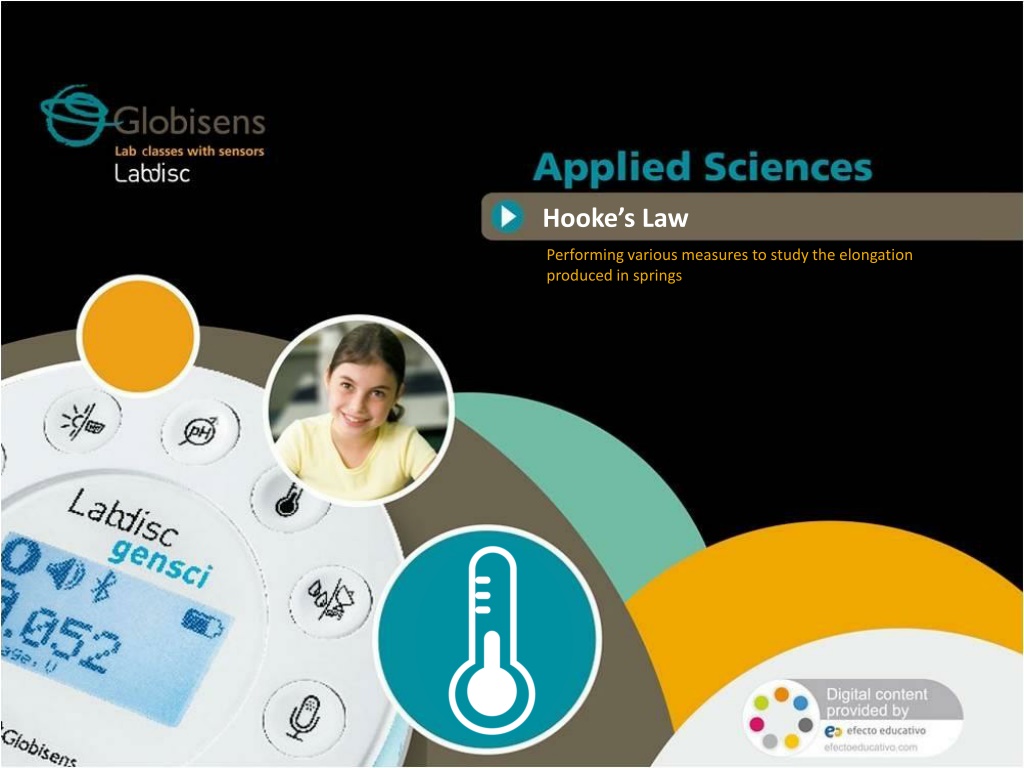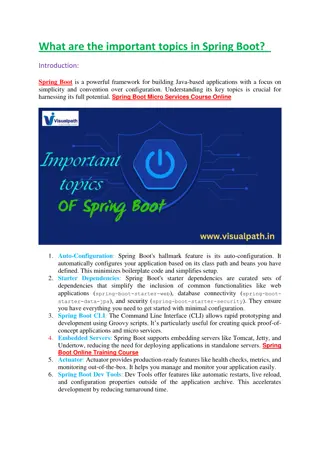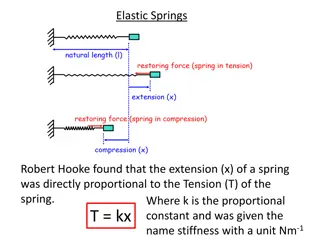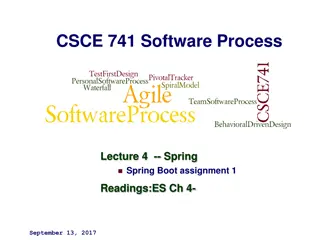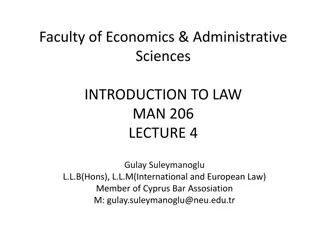Exploring Hookes Law in Spring Elongation Studies
Investigate the variations in spring length and associated physical magnitudes using Hookes Law. Understand elasticity properties through experiments with springs while exploring the direct proportionality between force and elongation. Students form hypotheses and test them using force sensors in this engaging physics activity.
Download Presentation

Please find below an Image/Link to download the presentation.
The content on the website is provided AS IS for your information and personal use only. It may not be sold, licensed, or shared on other websites without obtaining consent from the author. Download presentation by click this link. If you encounter any issues during the download, it is possible that the publisher has removed the file from their server.
E N D
Presentation Transcript
Hookes Law Performing various measures to study the elongation produced in springs
Hookes Law Performing various measures to study the elongation produced in springs Objective The goal of the activity is to investigate the variations in a spring s length, the physical magnitude associated with this, and possible applications. Students will create a hypothesis and proceed to test it using the Labdisc Dymo force sensor.
Hookes Law Performing various measures to study the elongation produced in springs Introduction and theory We are constantly building and elaborating on different machines or objects. For this it is necessary to know the properties of the component materials, such as elasticity. There are many materials that have elastic properties and we use them in daily life. This includes springs which can be expanded and contracted. If you check different appliances in your home, you will notice that springs are often used. What is the main feature that indicates if a material is elastic?
Hookes Law Performing various measures to study the elongation produced in springs Introduction and theory What action do you have to perform in order to observe the elastic properties of an object? What variables do you identify when performing such an action?
Hookes Law Performing various measures to study the elongation produced in springs Introduction and theory Theoretical We can demonstrate experimentally that there is a direct proportionality between the force generated by the spring s elastic force, and the elongation. The ratio occurs only up to a certain elongation, and this is called yield stress. In this mechanical process, after overcoming this limit, the object may suffer permanent deformation or rupture. The spring force is the restorative kind, that is why a negative sign is shown in the following equation: = F k x Elastic force Elongation Spring constant
Hookes Law Performing various measures to study the elongation produced in springs Introduction and theory Each object has different elastic properties, thus the constant k is changed as being studied. The elongation can be negative (compression) or positive. Apart from the spring, there are different elastic materials, which tend to return to their original shape after being deformed. = x L L f i
Hookes Law Performing various measures to study the elongation produced in springs Introduction and theory Now students are encouraged to raise a hypothesis which must be tested with an experiment. If two different springs are both elongated by 10 cm and then by 15 cm and the force exerted by the springs is measured in each case, what results do you expect in each stretch?
Hookes Law Performing various measures to study the elongation produced in springs Activity description Students will measure the force exerted by two springs. They will measure the force that performs each of the springs with elongations of 0 cm, 5 cm, 10 cm, 15 cm, 20 cm and 25 cm. To perform these measurements they should use the Labdisc Dymo force sensor.
Hookes Law Performing various measures to study the elongation produced in springs Resources and materials Labdisc Dymo force sensor USB cable Coil springs, 150 and 100 mm
Hookes Law Performing various measures to study the elongation produced in springs Using the Labdisc Labdisc configuration To collect force measurements with the Labdisc Dymo force sensor, follow these steps: Open the GlobiLab software and turn on the Labdisc. 1 2 Click on the Bluetooth icon in the bottom right corner of the GlobiLab screen. Select the Labdisc you are currently using. Once the Labdisc has been recognized by the software, the icon will change from a grey to blue color . If you prefer a USB connection follow the previous instruction, clicking on the USB icon. You will see the same color change when the Labdisc is recognized .
Hookes Law Performing various measures to study the elongation produced in springs Using the Labdisc 4 Once you have finished the sensor configuration start measuring by clicking . Once you have finished measuring stop the Labdisc by clicking . 5
Hookes Law Performing various measures to study the elongation produced in springs Experiment Place the spring on the hook for the Labdisc Dymo force sensor. Hold the Labdisc Dymo force sensor, with the help of a partner, or by using a lab stand hole. From 0 cm elongation, hold the position until it delivers a constant value in the graph.
Endothermic and exothermic reactions Hooke s Law Performing different measurements to examine which reactions release or consume heat. produced in springs Performing various measures to study the elongation Experiment Experiment Repeat the procedure above increasing the elongation by 5 cm each time, up to 25 cm elongation. Save the graph obtained. Repeat the procedure for the following spring.
Hookes Law Performing various measures to study the elongation produced in springs Results and analysis In each of the graphs indicate the deflection of the spring with the tool , at the corresponding moments. After this, show the values of force at each moment of study by clicking on the curve with the tool .
Hookes Law Performing various measures to study the elongation produced in springs Results and analysis Look at the strength and elongation values in both graphs. How do these relate to your initial hypothesis? What is the reason that the graph is stepped? What difference can you identify between the two graphs obtained?
Endothermic and exothermic reactions Performing various measures to study the elongation produced in springs Results and analysis The graph below should be similar to the one the students came up with:
Endothermic and exothermic reactions Performing various measures to study the elongation produced in springs Results and analysis The graph below should be similar to the one the students came up with:
Hookes Law Performing various measures to study the elongation produced in springs Conclusion For each spring, calculate the ratio between strength and elongation. In each case obtain an average. Which of the springs is greater? What does this value symbolize? Students should identify that the spring constant, i.e. the ratio between force and elongation by value, describes how the spring will behave during elongation. They should conclude that the greater the spring constant, the higher the restorative power. At what range of elongation do the two springs perform the same strength? Students observing the graph must realize that at times the two springs were performing the same force. This is also associated with elongation. The response must be given within a range by not having the information about the spring elongation in every second.
Hookes Law Performing various measures to study the elongation produced in springs Activities for further application Can this knowledge be useful in bungee jumping? Perform research to answer. Students should identify that when performing a bungee jump, height and weight should be determined by safety. Therefore, the force with which the bungee rope is elongated is important to calculate. The teacher can help identify that this is a conservation of mechanical energy, noting that both the speed with which the person falls and the weight, influences the elongation of the bungee rope, thus introducing the concept of elastic energy. Can I know what force was applied to a spring and elongation by knowing the constant? Make a force diagram to justify your answer. Students must justify their answer with a diagram showing that the applied force and the spring force have the same module. Thus, by Hooke 's Law they can identify that the spring can be used as a dynamometer.
